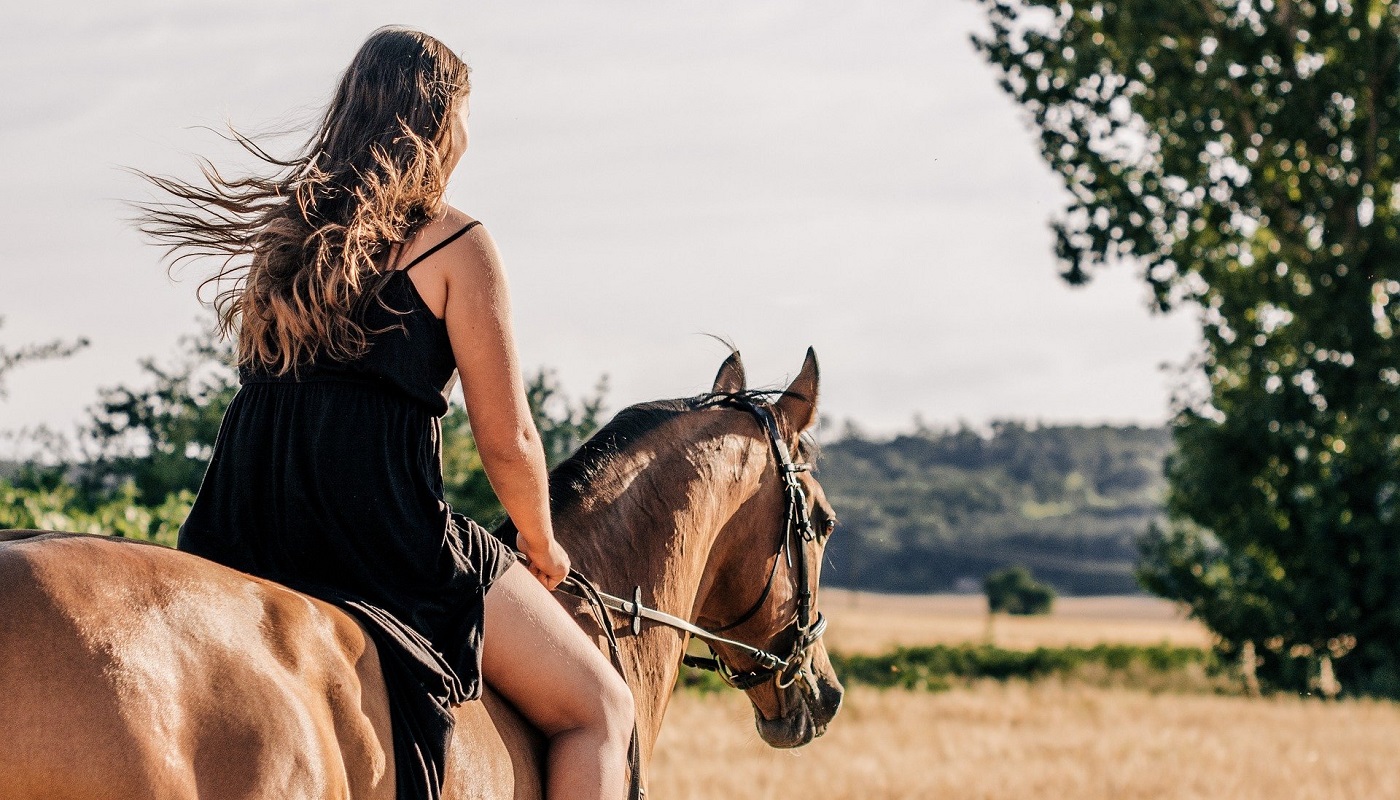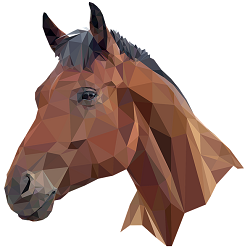
Almost every rider at the beginning of their journey has faced the problem of landing at a gallop. It shakes, it goes somewhere, you want to squeeze your fingers with a dead grip on the saddle or the mane, just to avoid rolling off the horse’s back, especially if the horse is not a soft couch. But all difficulties are solvable, you just need to understand where to start.
We want to clarify that it is best to apply all the tips and master the canter on a reliable calm horse with a soft gallop, when you are held in the corral and you can concentrate on how you feel, not distracted by controlling the horse and maintaining the gait.
Don’t get caught up in the process of riding. It really is difficult, but you need to relax and exhale as much as possible. Two gallop tempos – inhale, two – exhale. You can sing songs or tell poems. It is a common practice, and it is not so important what to do – even if it’s chapters from your favorite book recited aloud or counting the trees and bushes around. The whole problem is that when a person is not accustomed to a given gait, he unwittingly starts using his brain to control his body while riding, not allowing his body to work on its own in time. Trying to ride “properly” causes the rider to be late, to flatten out, and to clamp down more and more. Bottom line – you just have to disconnect the rider’s head from the riding process by occupying the brain with something else. As ridiculous as it may sound, muscles clamped by the brain should not be expected to be flexible and work properly. A jammed gallop will only give the rider back and neck pain, as well as unnecessary strain on the horse’s back.
Be aware of your natural reactions to a stressful situation. Whether the rider wants to or not, but one of the most common mistakes is to roll the body forward at fast gaits, when the rider automatically tries to curl into a fetal position. This is especially true when at the initial stage you have to hold on to the saddle. Hands as if by themselves pull a person forward and down, making him literally curl up. How to avoid this? Exaggeratedly lean back. By leaning back and using the arms as cables of a suspension bridge, it would be easier for the rider to use the lower back. This measure is temporary, and of course it is wrong to ride in this position all the time. But once the rider gets a feel for the lumbar work and sits firmly in the saddle, he can begin to gradually straighten out, adopting the classic riding position.
This can also include riding without stirrups. At first, such seemingly comfortable stirrups can become a hindrance, aggravating an already unstable position. Very often beginners tense the leg muscles, unnoticed by themselves rising up in the stirrups, rising above the saddle, and together with the forward bend the novice rider deprives himself of the balance. Without stirrups the weight of one’s legs will press the rider more tightly to the saddle, which in itself ensures greater stability.
One should not rush to gallop without arms. Firstly, one should put oneself in the saddle, after which the necessity to hold oneself will disappear by itself. And if there is an urgent need to let go of the saddle, you should never do it sharply. Smooth and measured – at first just unclench your fingers one by one, only then try to take your hands one by one away from the saddle. Little by little, letting yourself get used to it. The desire to develop faster is good, but do not forget that any case should be approached wisely. And haste in this case can only set the rider back a step, slowing down the learning process.
Also, exercises can help to acquire a stable position at canter. Let me repeat: exercises at canter are best done on a calm horse with soft gaits which is used to a variety of movements of riders on its back. It is extremely desirable that a trainer, an instructor or at least an experienced friend should hold you at the cord. It’s much safer this way, you are not distracted by the control of the horse and the control of the gait, and the person from the ground will tell you if you are doing everything right.
As soon as the rider feels minimal confidence that he or she is not planning to fall right now, and can release at least one hand, you can start to try the exercise.
With one hand free, you should put it straight to the side and gently turn your whole body and gently place your palm on the horse’s croup from above. This position will help to feel the oscillating movements that the horse’s back makes and the rider’s loin should make. It should be done to both sides in turn, preferably changing the direction of the gallop in the same way.
The rider cannot ride all his life with his hand on the horse’s butt, therefore one should start to straighten up. This is done from an arm-supported position by slowly raising the palm over the horse’s body and gently straightening the body. There is no need to try to sit straight on the first round, it would be enough just to stop touching and only when you feel confident in this position you can turn the body to the normal position and put your hand back to front. The main thing is smoothness, there is no need to be “heroic.
In addition to all of the above, the distraction, which we talked about in the first part of the article, will help you to free your hands completely and loosen them. Already have one hand free and you do not fall anywhere? Great. Don’t forget to tilt your body back a bit, but stay in your normal posture and fix your own collar (helmet, belt, plait, etc.) with your hand. The longer the action takes, the better. At the same time, in parallel with all this, you should not forget that you can try to let go of two hands. However, it is worth remembering that you should not do anything with them at once. Try to unclench the fingers of both hands, holding them close to the saddle, just as gradually as with one hand already both taking them farther and farther away. Ideally, after taking both hands away from the saddle, you should be able to use both hands to take off and put on the hood, for example, while still sitting at a gallop.
There are some general guidelines, which are difficult to call exercises and which do not make sense to describe each in a separate paragraph. Do not forget about the training trot and step. It is worth to listen to your sensations at a good wide trot (with eyes closed and relaxed) and trot. It is extremely important not to forget the need to look forward or even slightly upwards. Imagine you have an obstacle ahead, look for it with your eyes and never look at the horse’s ears or neck, let alone at your hands.
Don’t get too upset when something doesn’t come out right away. The gallop is not as scary as they sometimes tell you about it. It is a wonderful comfortable gait that gives the rider a sense of flight and oneness with the horse. Patience, work on yourself and perseverance will help you overcome all difficulties!
